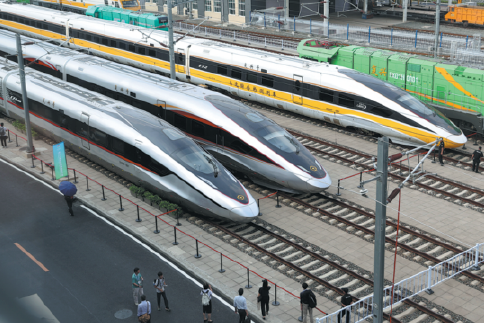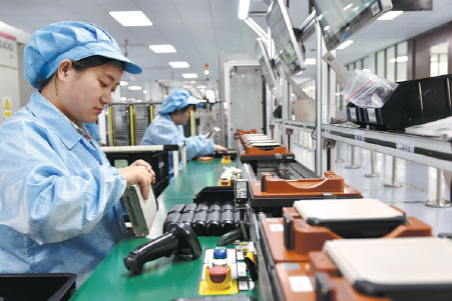Future sectors to receive more play
Humanoid robots, metaverse and brain-computer interface in focus

China will ramp up efforts to bolster the development of future-oriented industries such as humanoid robots, the metaverse and brain-computer interface, in order to foster new growth drivers, while accelerating the application of artificial intelligence in manufacturing as well as other key industries, according to the country's top industry regulator.
More efforts should be made to promote the integrated development of technological and industrial innovations, speed up the implementation of the "AI Plus" initiative, and develop the biomanufacturing and low-altitude economy at a faster pace, said Xie Shaofeng, chief engineer of the Ministry of Industry and Information Technology, at a news conference in Beijing on Friday.
The nation has nurtured and open-sourced AI-powered large language models, with stepped-up adoption across various industries including electronics and consumer goods, Xie said, highlighting that AI mobile phones, AI computers and AI glasses have become new growth points driving economic development.
He noted that China's industrial sector has maintained its upward trajectory in the first half of this year, with equipment and high-tech manufacturing witnessing robust growth.
Data from the National Bureau of Statistics showed that the country's industrial output, a gauge of activity in manufacturing, mining and utilities, grew 6.4 percent year-on-year in the first six months. It rose 6.8 percent year-on-year in June after a 5.8 percent increase in May.
Equipment manufacturing output surged 10.2 percent year-on-year while high-tech manufacturing jumped 9.5 percent — 3.8 percentage points and 3.1 percentage points higher than that of overall industrial output, respectively, during the period.
The country's information and communication industry has also gained strong growth momentum in the first half. The number of 5G base stations in China topped 4.55 million by the end of June, while the number of 5G mobile phone subscribers hit 1.12 billion nationwide, with the user penetration rate reaching more than 79 percent, according to the ministry.
Looking ahead, China will accelerate steps to promote the deployment of 5G-Advanced, or 5G-A networks, boost the research and development of 6G technology, and nurture an industrial ecosystem related to 6G application, Xie said.
He added that the country will expand opening-up in value-added telecommunications services in an orderly manner and support foreign-funded enterprises to participate in the pilot program. The number of foreign-invested telecom enterprises in China surpassed 2,600 in the first half of this year, an increase of 27 percent compared to the same period in 2024.
New growth drivers that cover equipment manufacturing, new energy vehicles and high-tech manufacturing segments continued to grow at a good clip in the first half of the year, and this has provided solid support for the growth of China's industrial output, said Li Xianjun, an associate researcher at the Institute of Industrial Economics of the Chinese Academy of Social Sciences.
Zhu Keli, founding director of the China Institute of New Economy, said sci-tech innovation is crucial for cultivating new growth engines and competitive advantages. "China's sharpening focus on leveraging cutting-edge digital technologies, such as AI, 5G and big data, is conducive to propelling the upgrading of traditional industries, reducing the operational costs of enterprises and improving production efficiency," he said.
The key drivers of China's economic growth come from its large-scale manufacturing, green transition, thriving innovation ecosystem and technological edge, said Jason Ding, managing partner of consultancy Bain & Co Greater China.
fanfeifei@chinadaily.com.cn




































